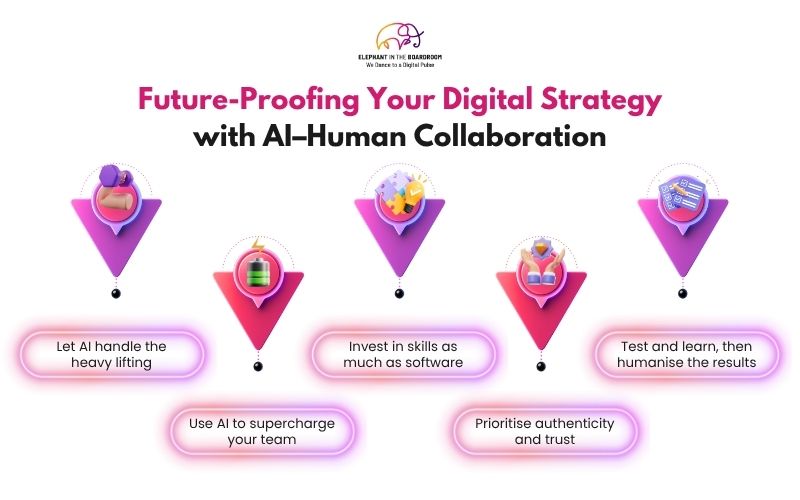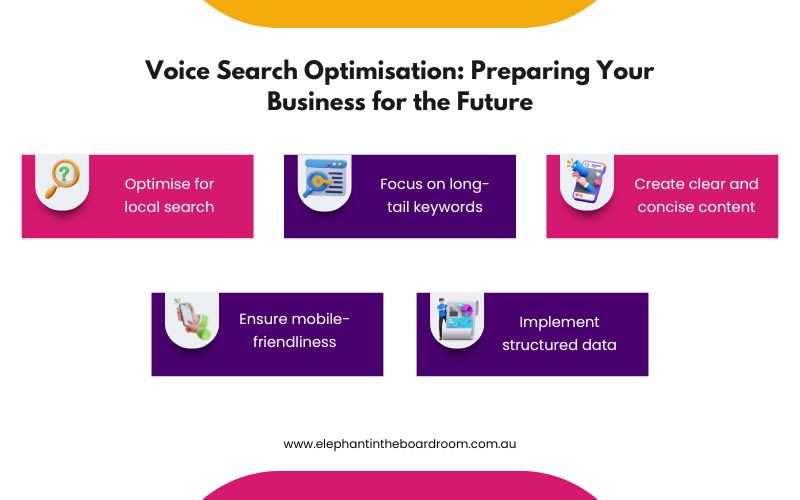
Here’s an uncomfortable truth: AI can write symphonies, paint portraits, and even pitch ad campaigns faster than most of us can finish our morning coffee. But does faster mean better? In a world increasingly driven by algorithms and automation, the question isn’t whether AI is creative - it’s whether we’re ready to redefine what creativity means. Are we trading originality for efficiency? And if so, what gets lost in the process?
AI and human creativity shouldn’t be at odds, but lately, they’ve been painted as competitors. The reality is far more complex, and frankly, more exciting. Because when machines bring speed and scale, and humans bring emotion, creativity, and lived experience - that’s where the real magic happens.
In this blog, we explore why the boldest, most brilliant ideas still come from a blend of AI and human creativity, and why leaning too heavily on either one could mean missing out on what makes creativity truly powerful.
What’s Inside:
- The Human Touch: What AI Still Can’t Replicate
- AI and Human Creativity: Why the Best Ideas Still Come From Both
- Future-Proofing Your Digital Strategy with AI–Human Collaboration
- Start Your Next Chapter with AI and Human Creativity
The Human Touch: What AI Still Can’t Replicate
Are humans still needed nowadays? Do we still need to act and think when AI is doing so much of the heavy lifting? Well, absolutely. While AI can analyse data, generate content, and even mimic creativity, it still lacks the nuance, intuition, and emotional intelligence that only humans bring to the table.
In business, that means understanding context, reading between the lines, making judgment calls, and building real human connections, none of which can be fully outsourced to a machine. The best strategies still come from people who think critically, challenge ideas, and create with purpose.
AI and Human Creativity: Why the Best Ideas Still Come From Both

There’s a lot of talk about AI taking over creativity, but the truth is, it is not a competition. The real value shows up when AI and human creativity work side by side.
Here’s why AI and human creativity still produce the best ideas:
AI Enhances Speed, But Humans Bring Direction
AI can generate ideas, images, or data in seconds, but without clear creative direction, it's just noise. You are the one who knows your brand voice, your customer, and your purpose. When you pair that clarity with AI’s fast execution, things get done smarter, not just faster.
Humans See Nuance, AI Sees Patterns
AI applications are great at spotting trends across huge datasets, but it doesn’t always grasp context or emotional nuance. That’s where you step in, adding tone, relevance, and meaning that aligns with your audience. Together, you create ideas that are both data-backed and deeply resonant.
AI Drafts, Humans Craft
Whether it is a headline, campaign concept, or landing page, AI can spit out a starting point. But those ideas need a human eye to refine, polish, and make them feel real. You don’t just take what it gives, you shape it into something people want to engage with.
Humans Innovate, AI Iterates
You come up with the spark, the unexpected idea or fresh angle. AI helps you test, optimise, and scale that idea across platforms with consistency and insight. It is a cycle of innovation and refinement, not replacement.
AI Removes Grunt Work, Humans Focus on Strategy
Imagine not spending hours on research, formatting, or resizing images. AI can take care of the repetitive stuff, freeing you up to think bigger, about brand experience, storytelling, and business outcomes. That balance is where truly impactful ideas are born.
Together, they balance logic and emotion. AI is logical. Humans are emotional. The best ideas strike that balance, driven by data, shaped by empathy, and delivered with impact.
Future-Proofing Your Digital Strategy with AI–Human Collaboration

If you are building a digital strategy that’s built to last, you need both the logic of machines and the emotional intelligence of people working together in harmony.
Here’s what that looks like in practice, and how you can start AI integration today:
Let AI Handle the Heavy Lifting
Use AI for what it does best, analysing data, automating workflows, generating first drafts, and identifying trends. But always apply a human lens to interpret those insights and shape them into something meaningful. That might mean refining AI-generated content to make it sound more ‘you’, or applying context and empathy to campaigns based on real-world knowledge.
Use AI to Supercharge Your Team
Think of AI as an assistant, not a replacement. Whether it is helping your designers create mood boards faster or giving your SEO team smart keyword clusters, the goal is to make your people more effective, not redundant. The tech should free your team to focus on high-value work, strategy, storytelling, creative direction, and customer relationships.
Invest in Skills as Much as Software
Having the best tools won’t help if your team doesn’t know how to use them strategically. Upskill your people in AI literacy, creative thinking, and data interpretation.
Prioritise Authenticity and Trust
Consumers are savvy. They can spot soulless, AI-generated content from a mile away. Use AI to create efficiencies, but don’t lose the human touch that builds trust, loyalty, and engagement. Personalised emails, thoughtful messaging, genuine interactions, these still matter, and they come from people.
Test and Learn, Then Humanise the Results
AI is brilliant at testing variations and identifying what performs best, but it is up to you to translate that into brand-aligned messaging. Don’t just go with what the algorithm says works, take the insights, then refine the output with personality, tone, and purpose.
Start Your Next Chapter with AI and Human Creativity
The magic doesn’t come from one or the other, it is the mix that sparks innovation, originality, and impact. Even if you are building a brand, launching a campaign, or reimagining your website, our team knows how to bring the best of both together. Using next-gen tools and clever thinking, we help you turn big ideas into real results.
AI and human creativity go further when you have the right partner behind you. If you are ready to future-proof your strategy with smarts and soul, you are in the right place. Let’s turn your boldest ideas into brilliant results, get in touch with us today.

Here’s an uncomfortable truth: AI can write symphonies, paint portraits, and even pitch ad campaigns faster than most of us can finish our morning coffee. But does faster mean better? In a world increasingly driven by algorithms and automation, the question isn’t whether AI is creative - it’s whether we’re ready to redefine what creativity means. Are we trading originality for efficiency? And if so, what gets lost in the process?
AI and human creativity shouldn’t be at odds, but lately, they’ve been painted as competitors. The reality is far more complex, and frankly, more exciting. Because when machines bring speed and scale, and humans bring emotion, creativity, and lived experience - that’s where the real magic happens.
In this blog, we explore why the boldest, most brilliant ideas still come from a blend of AI and human creativity, and why leaning too heavily on either one could mean missing out on what makes creativity truly powerful.
What’s Inside:
- The Human Touch: What AI Still Can’t Replicate
- AI and Human Creativity: Why the Best Ideas Still Come From Both
- Future-Proofing Your Digital Strategy with AI–Human Collaboration
- Start Your Next Chapter with AI and Human Creativity
The Human Touch: What AI Still Can’t Replicate
Are humans still needed nowadays? Do we still need to act and think when AI is doing so much of the heavy lifting? Well, absolutely. While AI can analyse data, generate content, and even mimic creativity, it still lacks the nuance, intuition, and emotional intelligence that only humans bring to the table.
In business, that means understanding context, reading between the lines, making judgment calls, and building real human connections, none of which can be fully outsourced to a machine. The best strategies still come from people who think critically, challenge ideas, and create with purpose.
AI and Human Creativity: Why the Best Ideas Still Come From Both

There’s a lot of talk about AI taking over creativity, but the truth is, it is not a competition. The real value shows up when AI and human creativity work side by side.
Here’s why AI and human creativity still produce the best ideas:
AI Enhances Speed, But Humans Bring Direction
AI can generate ideas, images, or data in seconds, but without clear creative direction, it's just noise. You are the one who knows your brand voice, your customer, and your purpose. When you pair that clarity with AI’s fast execution, things get done smarter, not just faster.
Humans See Nuance, AI Sees Patterns
AI applications are great at spotting trends across huge datasets, but it doesn’t always grasp context or emotional nuance. That’s where you step in, adding tone, relevance, and meaning that aligns with your audience. Together, you create ideas that are both data-backed and deeply resonant.
AI Drafts, Humans Craft
Whether it is a headline, campaign concept, or landing page, AI can spit out a starting point. But those ideas need a human eye to refine, polish, and make them feel real. You don’t just take what it gives, you shape it into something people want to engage with.
Humans Innovate, AI Iterates
You come up with the spark, the unexpected idea or fresh angle. AI helps you test, optimise, and scale that idea across platforms with consistency and insight. It is a cycle of innovation and refinement, not replacement.
AI Removes Grunt Work, Humans Focus on Strategy
Imagine not spending hours on research, formatting, or resizing images. AI can take care of the repetitive stuff, freeing you up to think bigger, about brand experience, storytelling, and business outcomes. That balance is where truly impactful ideas are born.
Together, they balance logic and emotion. AI is logical. Humans are emotional. The best ideas strike that balance, driven by data, shaped by empathy, and delivered with impact.
Future-Proofing Your Digital Strategy with AI–Human Collaboration

If you are building a digital strategy that’s built to last, you need both the logic of machines and the emotional intelligence of people working together in harmony.
Here’s what that looks like in practice, and how you can start AI integration today:
Let AI Handle the Heavy Lifting
Use AI for what it does best, analysing data, automating workflows, generating first drafts, and identifying trends. But always apply a human lens to interpret those insights and shape them into something meaningful. That might mean refining AI-generated content to make it sound more ‘you’, or applying context and empathy to campaigns based on real-world knowledge.
Use AI to Supercharge Your Team
Think of AI as an assistant, not a replacement. Whether it is helping your designers create mood boards faster or giving your SEO team smart keyword clusters, the goal is to make your people more effective, not redundant. The tech should free your team to focus on high-value work, strategy, storytelling, creative direction, and customer relationships.
Invest in Skills as Much as Software
Having the best tools won’t help if your team doesn’t know how to use them strategically. Upskill your people in AI literacy, creative thinking, and data interpretation.
Prioritise Authenticity and Trust
Consumers are savvy. They can spot soulless, AI-generated content from a mile away. Use AI to create efficiencies, but don’t lose the human touch that builds trust, loyalty, and engagement. Personalised emails, thoughtful messaging, genuine interactions, these still matter, and they come from people.
Test and Learn, Then Humanise the Results
AI is brilliant at testing variations and identifying what performs best, but it is up to you to translate that into brand-aligned messaging. Don’t just go with what the algorithm says works, take the insights, then refine the output with personality, tone, and purpose.
Start Your Next Chapter with AI and Human Creativity
The magic doesn’t come from one or the other, it is the mix that sparks innovation, originality, and impact. Even if you are building a brand, launching a campaign, or reimagining your website, our team knows how to bring the best of both together. Using next-gen tools and clever thinking, we help you turn big ideas into real results.
AI and human creativity go further when you have the right partner behind you. If you are ready to future-proof your strategy with smarts and soul, you are in the right place. Let’s turn your boldest ideas into brilliant results, get in touch with us today.

"Hey Google, where is the best local business near me?” Sounds familiar? Well, you are already living in the age of voice search. It is quick, convenient, and changing the game for how people interact with technology and businesses. With smart speakers in homes and voice assistants in every pocket, more people are speaking their searches instead of typing them. That shift is shaping a new kind of online visibility, and voice search optimisation is becoming essential if you want your business to stay discoverable.
This blog is your wake-up call. We are diving into how voice search optimisation is reshaping the way customers discover brands, and more importantly, how your business can be ready for it. Keep reading, because the way people search is changing fast… and you don’t want to be left behind.
What’s Inside:
- The Rise of Voice Search: Trends and Statistics
- How Voice Search Differs from Traditional Search?
- Voice Search Optimisation: Preparing Your Business for the Future
- Future-Proof Your Brand with Voice Search Optimisation
The Rise of Voice Search: Trends and Statistics
Voice search is a technology that allows users to perform searches on the internet by speaking into a device, such as a smartphone or smart speaker, rather than typing. This hands-free method leverages voice recognition software to interpret spoken commands and queries, providing quick and convenient access to information.
In Australia, the adoption of voice search is on the rise. Recent statistics indicate that nearly 40% of Australian households own a smart speaker, with Google Home leading at 31%, followed by Amazon Echo at 21% and Apple HomePod at 19%.
Furthermore, 90% of users find voice search faster and more convenient than traditional typing. This growing preference for voice-activated technology underscores the importance for businesses to optimise their digital presence for voice search.
How Voice Search Differs from Traditional Search?

We have all done it, called out to Siri, Alexa or Google Assistant while making dinner, driving, or just being too lazy to type. Voice search is now part of our everyday lives, but it works quite differently from the good old-fashioned way of typing into a search bar.
Here’s how voice search stacks up against traditional search:
It is More Conversational
When we type, we tend to use short, snappy keywords like “weather Melbourne” or “best coffee near me.” But when we speak, it sounds more like, “Hey Google, what’s the weather like in Melbourne today?” Voice searches are more natural and often phrased as full questions.
Intent is Clearer
Because voice searches are usually longer and more detailed, they give search engines a better sense of intent. This helps Google serve more specific results. For businesses, it means optimising for long-tail keywords and answering common customer questions can give you a big edge.
Faster and Hands-free
The biggest driver of voice search? Convenience. People use it when they are multitasking, walking, driving, cooking, or even brushing their teeth. That means search results need to be quick, clear, and easy to digest, ideally read aloud in a few seconds.
Relies on Featured Snippets
Voice search relies heavily on featured snippets and properly marked-up data. If your site is well-optimised and structured, your chances of being the spoken answer go way up.
Voice Search Optimisation: Preparing Your Business for the Future

If your website isn’t geared for voice search, it’s time to catch up. Here’s what you need to know to make your business easier to find by voice.
Optimise for Local Search
Many voice searches are local in nature, like "Find a plumber near me." Ensure your business is listed accurately on platforms like Google Business Profile, and include local keywords in your website content to enhance your local SEO.
Focus on Long-Tail Keywords
Specific phrases that users are more likely to speak are essential for voice search optimisation. These keywords often reflect the natural questions people ask, such as "How do I fix a leaky tap?" Integrating these into your content can improve your visibility in voice search results.
Create Clear and Concise Content
Voice assistants aim to provide quick answers. Structure your content to answer common questions directly and succinctly. Using FAQ sections can be particularly effective in addressing specific queries.
Ensure Mobile-Friendliness
Given that many voice searches occur on mobile devices, having a mobile-optimised website is important. A responsive design that loads quickly can enhance user experience and improve your search rankings.
Implement Structured Data
Using schema markup helps search engines understand your website content better, increasing the chances of being featured in voice search results. This structured data can highlight important information like business hours, reviews, and services offered.
Future-Proof Your Brand with Voice Search Optimisation
Voice search optimisation isn’t something to leave for later, it is happening now. If your business isn’t already preparing for this shift, you are at risk of falling behind. Elephant in the Boardroom makes voice search optimisation feel simple, strategic, and tailored to your audience, so you are ready for the way people search today and tomorrow.
Want to stay competitive and relevant in a fast-changing digital space? Let’s chat. Our team can help you kickstart a voice search optimisation strategy that sets your business apart and puts you in front of the right people, at the right time, just by asking.

"Hey Google, where is the best local business near me?” Sounds familiar? Well, you are already living in the age of voice search. It is quick, convenient, and changing the game for how people interact with technology and businesses. With smart speakers in homes and voice assistants in every pocket, more people are speaking their searches instead of typing them. That shift is shaping a new kind of online visibility, and voice search optimisation is becoming essential if you want your business to stay discoverable.
This blog is your wake-up call. We are diving into how voice search optimisation is reshaping the way customers discover brands, and more importantly, how your business can be ready for it. Keep reading, because the way people search is changing fast… and you don’t want to be left behind.
What’s Inside:
- The Rise of Voice Search: Trends and Statistics
- How Voice Search Differs from Traditional Search?
- Voice Search Optimisation: Preparing Your Business for the Future
- Future-Proof Your Brand with Voice Search Optimisation
The Rise of Voice Search: Trends and Statistics
Voice search is a technology that allows users to perform searches on the internet by speaking into a device, such as a smartphone or smart speaker, rather than typing. This hands-free method leverages voice recognition software to interpret spoken commands and queries, providing quick and convenient access to information.
In Australia, the adoption of voice search is on the rise. Recent statistics indicate that nearly 40% of Australian households own a smart speaker, with Google Home leading at 31%, followed by Amazon Echo at 21% and Apple HomePod at 19%.
Furthermore, 90% of users find voice search faster and more convenient than traditional typing. This growing preference for voice-activated technology underscores the importance for businesses to optimise their digital presence for voice search.
How Voice Search Differs from Traditional Search?

We have all done it, called out to Siri, Alexa or Google Assistant while making dinner, driving, or just being too lazy to type. Voice search is now part of our everyday lives, but it works quite differently from the good old-fashioned way of typing into a search bar.
Here’s how voice search stacks up against traditional search:
It is More Conversational
When we type, we tend to use short, snappy keywords like “weather Melbourne” or “best coffee near me.” But when we speak, it sounds more like, “Hey Google, what’s the weather like in Melbourne today?” Voice searches are more natural and often phrased as full questions.
Intent is Clearer
Because voice searches are usually longer and more detailed, they give search engines a better sense of intent. This helps Google serve more specific results. For businesses, it means optimising for long-tail keywords and answering common customer questions can give you a big edge.
Faster and Hands-free
The biggest driver of voice search? Convenience. People use it when they are multitasking, walking, driving, cooking, or even brushing their teeth. That means search results need to be quick, clear, and easy to digest, ideally read aloud in a few seconds.
Relies on Featured Snippets
Voice search relies heavily on featured snippets and properly marked-up data. If your site is well-optimised and structured, your chances of being the spoken answer go way up.
Voice Search Optimisation: Preparing Your Business for the Future

If your website isn’t geared for voice search, it’s time to catch up. Here’s what you need to know to make your business easier to find by voice.
Optimise for Local Search
Many voice searches are local in nature, like "Find a plumber near me." Ensure your business is listed accurately on platforms like Google Business Profile, and include local keywords in your website content to enhance your local SEO.
Focus on Long-Tail Keywords
Specific phrases that users are more likely to speak are essential for voice search optimisation. These keywords often reflect the natural questions people ask, such as "How do I fix a leaky tap?" Integrating these into your content can improve your visibility in voice search results.
Create Clear and Concise Content
Voice assistants aim to provide quick answers. Structure your content to answer common questions directly and succinctly. Using FAQ sections can be particularly effective in addressing specific queries.
Ensure Mobile-Friendliness
Given that many voice searches occur on mobile devices, having a mobile-optimised website is important. A responsive design that loads quickly can enhance user experience and improve your search rankings.
Implement Structured Data
Using schema markup helps search engines understand your website content better, increasing the chances of being featured in voice search results. This structured data can highlight important information like business hours, reviews, and services offered.
Future-Proof Your Brand with Voice Search Optimisation
Voice search optimisation isn’t something to leave for later, it is happening now. If your business isn’t already preparing for this shift, you are at risk of falling behind. Elephant in the Boardroom makes voice search optimisation feel simple, strategic, and tailored to your audience, so you are ready for the way people search today and tomorrow.
Want to stay competitive and relevant in a fast-changing digital space? Let’s chat. Our team can help you kickstart a voice search optimisation strategy that sets your business apart and puts you in front of the right people, at the right time, just by asking.

"Hey Google, where is the best local business near me?” Sounds familiar? Well, you are already living in the age of voice search. It is quick, convenient, and changing the game for how people interact with technology and businesses. With smart speakers in homes and voice assistants in every pocket, more people are speaking their searches instead of typing them. That shift is shaping a new kind of online visibility, and voice search optimisation is becoming essential if you want your business to stay discoverable.
This blog is your wake-up call. We are diving into how voice search optimisation is reshaping the way customers discover brands, and more importantly, how your business can be ready for it. Keep reading, because the way people search is changing fast… and you don’t want to be left behind.
What’s Inside:
- The Rise of Voice Search: Trends and Statistics
- How Voice Search Differs from Traditional Search?
- Voice Search Optimisation: Preparing Your Business for the Future
- Future-Proof Your Brand with Voice Search Optimisation
The Rise of Voice Search: Trends and Statistics
Voice search is a technology that allows users to perform searches on the internet by speaking into a device, such as a smartphone or smart speaker, rather than typing. This hands-free method leverages voice recognition software to interpret spoken commands and queries, providing quick and convenient access to information.
In Australia, the adoption of voice search is on the rise. Recent statistics indicate that nearly 40% of Australian households own a smart speaker, with Google Home leading at 31%, followed by Amazon Echo at 21% and Apple HomePod at 19%.
Furthermore, 90% of users find voice search faster and more convenient than traditional typing. This growing preference for voice-activated technology underscores the importance for businesses to optimise their digital presence for voice search.
How Voice Search Differs from Traditional Search?

We have all done it, called out to Siri, Alexa or Google Assistant while making dinner, driving, or just being too lazy to type. Voice search is now part of our everyday lives, but it works quite differently from the good old-fashioned way of typing into a search bar.
Here’s how voice search stacks up against traditional search:
It is More Conversational
When we type, we tend to use short, snappy keywords like “weather Melbourne” or “best coffee near me.” But when we speak, it sounds more like, “Hey Google, what’s the weather like in Melbourne today?” Voice searches are more natural and often phrased as full questions.
Intent is Clearer
Because voice searches are usually longer and more detailed, they give search engines a better sense of intent. This helps Google serve more specific results. For businesses, it means optimising for long-tail keywords and answering common customer questions can give you a big edge.
Faster and Hands-free
The biggest driver of voice search? Convenience. People use it when they are multitasking, walking, driving, cooking, or even brushing their teeth. That means search results need to be quick, clear, and easy to digest, ideally read aloud in a few seconds.
Relies on Featured Snippets
Voice search relies heavily on featured snippets and properly marked-up data. If your site is well-optimised and structured, your chances of being the spoken answer go way up.
Voice Search Optimisation: Preparing Your Business for the Future

If your website isn’t geared for voice search, it’s time to catch up. Here’s what you need to know to make your business easier to find by voice.
Optimise for Local Search
Many voice searches are local in nature, like "Find a plumber near me." Ensure your business is listed accurately on platforms like Google Business Profile, and include local keywords in your website content to enhance your local SEO.
Focus on Long-Tail Keywords
Specific phrases that users are more likely to speak are essential for voice search optimisation. These keywords often reflect the natural questions people ask, such as "How do I fix a leaky tap?" Integrating these into your content can improve your visibility in voice search results.
Create Clear and Concise Content
Voice assistants aim to provide quick answers. Structure your content to answer common questions directly and succinctly. Using FAQ sections can be particularly effective in addressing specific queries.
Ensure Mobile-Friendliness
Given that many voice searches occur on mobile devices, having a mobile-optimised website is important. A responsive design that loads quickly can enhance user experience and improve your search rankings.
Implement Structured Data
Using schema markup helps search engines understand your website content better, increasing the chances of being featured in voice search results. This structured data can highlight important information like business hours, reviews, and services offered.
Future-Proof Your Brand with Voice Search Optimisation
Voice search optimisation isn’t something to leave for later, it is happening now. If your business isn’t already preparing for this shift, you are at risk of falling behind. Elephant in the Boardroom makes voice search optimisation feel simple, strategic, and tailored to your audience, so you are ready for the way people search today and tomorrow.
Want to stay competitive and relevant in a fast-changing digital space? Let’s chat. Our team can help you kickstart a voice search optimisation strategy that sets your business apart and puts you in front of the right people, at the right time, just by asking.

"Hey Google, where is the best local business near me?” Sounds familiar? Well, you are already living in the age of voice search. It is quick, convenient, and changing the game for how people interact with technology and businesses. With smart speakers in homes and voice assistants in every pocket, more people are speaking their searches instead of typing them. That shift is shaping a new kind of online visibility, and voice search optimisation is becoming essential if you want your business to stay discoverable.
This blog is your wake-up call. We are diving into how voice search optimisation is reshaping the way customers discover brands, and more importantly, how your business can be ready for it. Keep reading, because the way people search is changing fast… and you don’t want to be left behind.
What’s Inside:
- The Rise of Voice Search: Trends and Statistics
- How Voice Search Differs from Traditional Search?
- Voice Search Optimisation: Preparing Your Business for the Future
- Future-Proof Your Brand with Voice Search Optimisation
The Rise of Voice Search: Trends and Statistics
Voice search is a technology that allows users to perform searches on the internet by speaking into a device, such as a smartphone or smart speaker, rather than typing. This hands-free method leverages voice recognition software to interpret spoken commands and queries, providing quick and convenient access to information.
In Australia, the adoption of voice search is on the rise. Recent statistics indicate that nearly 40% of Australian households own a smart speaker, with Google Home leading at 31%, followed by Amazon Echo at 21% and Apple HomePod at 19%.
Furthermore, 90% of users find voice search faster and more convenient than traditional typing. This growing preference for voice-activated technology underscores the importance for businesses to optimise their digital presence for voice search.
How Voice Search Differs from Traditional Search?

We have all done it, called out to Siri, Alexa or Google Assistant while making dinner, driving, or just being too lazy to type. Voice search is now part of our everyday lives, but it works quite differently from the good old-fashioned way of typing into a search bar.
Here’s how voice search stacks up against traditional search:
It is More Conversational
When we type, we tend to use short, snappy keywords like “weather Melbourne” or “best coffee near me.” But when we speak, it sounds more like, “Hey Google, what’s the weather like in Melbourne today?” Voice searches are more natural and often phrased as full questions.
Intent is Clearer
Because voice searches are usually longer and more detailed, they give search engines a better sense of intent. This helps Google serve more specific results. For businesses, it means optimising for long-tail keywords and answering common customer questions can give you a big edge.
Faster and Hands-free
The biggest driver of voice search? Convenience. People use it when they are multitasking, walking, driving, cooking, or even brushing their teeth. That means search results need to be quick, clear, and easy to digest, ideally read aloud in a few seconds.
Relies on Featured Snippets
Voice search relies heavily on featured snippets and properly marked-up data. If your site is well-optimised and structured, your chances of being the spoken answer go way up.
Voice Search Optimisation: Preparing Your Business for the Future

If your website isn’t geared for voice search, it’s time to catch up. Here’s what you need to know to make your business easier to find by voice.
Optimise for Local Search
Many voice searches are local in nature, like "Find a plumber near me." Ensure your business is listed accurately on platforms like Google Business Profile, and include local keywords in your website content to enhance your local SEO.
Focus on Long-Tail Keywords
Specific phrases that users are more likely to speak are essential for voice search optimisation. These keywords often reflect the natural questions people ask, such as "How do I fix a leaky tap?" Integrating these into your content can improve your visibility in voice search results.
Create Clear and Concise Content
Voice assistants aim to provide quick answers. Structure your content to answer common questions directly and succinctly. Using FAQ sections can be particularly effective in addressing specific queries.
Ensure Mobile-Friendliness
Given that many voice searches occur on mobile devices, having a mobile-optimised website is important. A responsive design that loads quickly can enhance user experience and improve your search rankings.
Implement Structured Data
Using schema markup helps search engines understand your website content better, increasing the chances of being featured in voice search results. This structured data can highlight important information like business hours, reviews, and services offered.
Future-Proof Your Brand with Voice Search Optimisation
Voice search optimisation isn’t something to leave for later, it is happening now. If your business isn’t already preparing for this shift, you are at risk of falling behind. Elephant in the Boardroom makes voice search optimisation feel simple, strategic, and tailored to your audience, so you are ready for the way people search today and tomorrow.
Want to stay competitive and relevant in a fast-changing digital space? Let’s chat. Our team can help you kickstart a voice search optimisation strategy that sets your business apart and puts you in front of the right people, at the right time, just by asking.

"Hey Google, where is the best local business near me?” Sounds familiar? Well, you are already living in the age of voice search. It is quick, convenient, and changing the game for how people interact with technology and businesses. With smart speakers in homes and voice assistants in every pocket, more people are speaking their searches instead of typing them. That shift is shaping a new kind of online visibility, and voice search optimisation is becoming essential if you want your business to stay discoverable.
This blog is your wake-up call. We are diving into how voice search optimisation is reshaping the way customers discover brands, and more importantly, how your business can be ready for it. Keep reading, because the way people search is changing fast… and you don’t want to be left behind.
What’s Inside:
- The Rise of Voice Search: Trends and Statistics
- How Voice Search Differs from Traditional Search?
- Voice Search Optimisation: Preparing Your Business for the Future
- Future-Proof Your Brand with Voice Search Optimisation
The Rise of Voice Search: Trends and Statistics
Voice search is a technology that allows users to perform searches on the internet by speaking into a device, such as a smartphone or smart speaker, rather than typing. This hands-free method leverages voice recognition software to interpret spoken commands and queries, providing quick and convenient access to information.
In Australia, the adoption of voice search is on the rise. Recent statistics indicate that nearly 40% of Australian households own a smart speaker, with Google Home leading at 31%, followed by Amazon Echo at 21% and Apple HomePod at 19%.
Furthermore, 90% of users find voice search faster and more convenient than traditional typing. This growing preference for voice-activated technology underscores the importance for businesses to optimise their digital presence for voice search.
How Voice Search Differs from Traditional Search?

We have all done it, called out to Siri, Alexa or Google Assistant while making dinner, driving, or just being too lazy to type. Voice search is now part of our everyday lives, but it works quite differently from the good old-fashioned way of typing into a search bar.
Here’s how voice search stacks up against traditional search:
It is More Conversational
When we type, we tend to use short, snappy keywords like “weather Melbourne” or “best coffee near me.” But when we speak, it sounds more like, “Hey Google, what’s the weather like in Melbourne today?” Voice searches are more natural and often phrased as full questions.
Intent is Clearer
Because voice searches are usually longer and more detailed, they give search engines a better sense of intent. This helps Google serve more specific results. For businesses, it means optimising for long-tail keywords and answering common customer questions can give you a big edge.
Faster and Hands-free
The biggest driver of voice search? Convenience. People use it when they are multitasking, walking, driving, cooking, or even brushing their teeth. That means search results need to be quick, clear, and easy to digest, ideally read aloud in a few seconds.
Relies on Featured Snippets
Voice search relies heavily on featured snippets and properly marked-up data. If your site is well-optimised and structured, your chances of being the spoken answer go way up.
Voice Search Optimisation: Preparing Your Business for the Future

If your website isn’t geared for voice search, it’s time to catch up. Here’s what you need to know to make your business easier to find by voice.
Optimise for Local Search
Many voice searches are local in nature, like "Find a plumber near me." Ensure your business is listed accurately on platforms like Google Business Profile, and include local keywords in your website content to enhance your local SEO.
Focus on Long-Tail Keywords
Specific phrases that users are more likely to speak are essential for voice search optimisation. These keywords often reflect the natural questions people ask, such as "How do I fix a leaky tap?" Integrating these into your content can improve your visibility in voice search results.
Create Clear and Concise Content
Voice assistants aim to provide quick answers. Structure your content to answer common questions directly and succinctly. Using FAQ sections can be particularly effective in addressing specific queries.
Ensure Mobile-Friendliness
Given that many voice searches occur on mobile devices, having a mobile-optimised website is important. A responsive design that loads quickly can enhance user experience and improve your search rankings.
Implement Structured Data
Using schema markup helps search engines understand your website content better, increasing the chances of being featured in voice search results. This structured data can highlight important information like business hours, reviews, and services offered.
Future-Proof Your Brand with Voice Search Optimisation
Voice search optimisation isn’t something to leave for later, it is happening now. If your business isn’t already preparing for this shift, you are at risk of falling behind. Elephant in the Boardroom makes voice search optimisation feel simple, strategic, and tailored to your audience, so you are ready for the way people search today and tomorrow.
Want to stay competitive and relevant in a fast-changing digital space? Let’s chat. Our team can help you kickstart a voice search optimisation strategy that sets your business apart and puts you in front of the right people, at the right time, just by asking.

"Hey Google, where is the best local business near me?” Sounds familiar? Well, you are already living in the age of voice search. It is quick, convenient, and changing the game for how people interact with technology and businesses. With smart speakers in homes and voice assistants in every pocket, more people are speaking their searches instead of typing them. That shift is shaping a new kind of online visibility, and voice search optimisation is becoming essential if you want your business to stay discoverable.
This blog is your wake-up call. We are diving into how voice search optimisation is reshaping the way customers discover brands, and more importantly, how your business can be ready for it. Keep reading, because the way people search is changing fast… and you don’t want to be left behind.
What’s Inside:
- The Rise of Voice Search: Trends and Statistics
- How Voice Search Differs from Traditional Search?
- Voice Search Optimisation: Preparing Your Business for the Future
- Future-Proof Your Brand with Voice Search Optimisation
The Rise of Voice Search: Trends and Statistics
Voice search is a technology that allows users to perform searches on the internet by speaking into a device, such as a smartphone or smart speaker, rather than typing. This hands-free method leverages voice recognition software to interpret spoken commands and queries, providing quick and convenient access to information.
In Australia, the adoption of voice search is on the rise. Recent statistics indicate that nearly 40% of Australian households own a smart speaker, with Google Home leading at 31%, followed by Amazon Echo at 21% and Apple HomePod at 19%.
Furthermore, 90% of users find voice search faster and more convenient than traditional typing. This growing preference for voice-activated technology underscores the importance for businesses to optimise their digital presence for voice search.
How Voice Search Differs from Traditional Search?

We have all done it, called out to Siri, Alexa or Google Assistant while making dinner, driving, or just being too lazy to type. Voice search is now part of our everyday lives, but it works quite differently from the good old-fashioned way of typing into a search bar.
Here’s how voice search stacks up against traditional search:
It is More Conversational
When we type, we tend to use short, snappy keywords like “weather Melbourne” or “best coffee near me.” But when we speak, it sounds more like, “Hey Google, what’s the weather like in Melbourne today?” Voice searches are more natural and often phrased as full questions.
Intent is Clearer
Because voice searches are usually longer and more detailed, they give search engines a better sense of intent. This helps Google serve more specific results. For businesses, it means optimising for long-tail keywords and answering common customer questions can give you a big edge.
Faster and Hands-free
The biggest driver of voice search? Convenience. People use it when they are multitasking, walking, driving, cooking, or even brushing their teeth. That means search results need to be quick, clear, and easy to digest, ideally read aloud in a few seconds.
Relies on Featured Snippets
Voice search relies heavily on featured snippets and properly marked-up data. If your site is well-optimised and structured, your chances of being the spoken answer go way up.
Voice Search Optimisation: Preparing Your Business for the Future

If your website isn’t geared for voice search, it’s time to catch up. Here’s what you need to know to make your business easier to find by voice.
Optimise for Local Search
Many voice searches are local in nature, like "Find a plumber near me." Ensure your business is listed accurately on platforms like Google Business Profile, and include local keywords in your website content to enhance your local SEO.
Focus on Long-Tail Keywords
Specific phrases that users are more likely to speak are essential for voice search optimisation. These keywords often reflect the natural questions people ask, such as "How do I fix a leaky tap?" Integrating these into your content can improve your visibility in voice search results.
Create Clear and Concise Content
Voice assistants aim to provide quick answers. Structure your content to answer common questions directly and succinctly. Using FAQ sections can be particularly effective in addressing specific queries.
Ensure Mobile-Friendliness
Given that many voice searches occur on mobile devices, having a mobile-optimised website is important. A responsive design that loads quickly can enhance user experience and improve your search rankings.
Implement Structured Data
Using schema markup helps search engines understand your website content better, increasing the chances of being featured in voice search results. This structured data can highlight important information like business hours, reviews, and services offered.
Future-Proof Your Brand with Voice Search Optimisation
Voice search optimisation isn’t something to leave for later, it is happening now. If your business isn’t already preparing for this shift, you are at risk of falling behind. Elephant in the Boardroom makes voice search optimisation feel simple, strategic, and tailored to your audience, so you are ready for the way people search today and tomorrow.
Want to stay competitive and relevant in a fast-changing digital space? Let’s chat. Our team can help you kickstart a voice search optimisation strategy that sets your business apart and puts you in front of the right people, at the right time, just by asking.

"Hey Google, where is the best local business near me?” Sounds familiar? Well, you are already living in the age of voice search. It is quick, convenient, and changing the game for how people interact with technology and businesses. With smart speakers in homes and voice assistants in every pocket, more people are speaking their searches instead of typing them. That shift is shaping a new kind of online visibility, and voice search optimisation is becoming essential if you want your business to stay discoverable.
This blog is your wake-up call. We are diving into how voice search optimisation is reshaping the way customers discover brands, and more importantly, how your business can be ready for it. Keep reading, because the way people search is changing fast… and you don’t want to be left behind.
What’s Inside:
- The Rise of Voice Search: Trends and Statistics
- How Voice Search Differs from Traditional Search?
- Voice Search Optimisation: Preparing Your Business for the Future
- Future-Proof Your Brand with Voice Search Optimisation
The Rise of Voice Search: Trends and Statistics
Voice search is a technology that allows users to perform searches on the internet by speaking into a device, such as a smartphone or smart speaker, rather than typing. This hands-free method leverages voice recognition software to interpret spoken commands and queries, providing quick and convenient access to information.
In Australia, the adoption of voice search is on the rise. Recent statistics indicate that nearly 40% of Australian households own a smart speaker, with Google Home leading at 31%, followed by Amazon Echo at 21% and Apple HomePod at 19%.
Furthermore, 90% of users find voice search faster and more convenient than traditional typing. This growing preference for voice-activated technology underscores the importance for businesses to optimise their digital presence for voice search.
How Voice Search Differs from Traditional Search?

We have all done it, called out to Siri, Alexa or Google Assistant while making dinner, driving, or just being too lazy to type. Voice search is now part of our everyday lives, but it works quite differently from the good old-fashioned way of typing into a search bar.
Here’s how voice search stacks up against traditional search:
It is More Conversational
When we type, we tend to use short, snappy keywords like “weather Melbourne” or “best coffee near me.” But when we speak, it sounds more like, “Hey Google, what’s the weather like in Melbourne today?” Voice searches are more natural and often phrased as full questions.
Intent is Clearer
Because voice searches are usually longer and more detailed, they give search engines a better sense of intent. This helps Google serve more specific results. For businesses, it means optimising for long-tail keywords and answering common customer questions can give you a big edge.
Faster and Hands-free
The biggest driver of voice search? Convenience. People use it when they are multitasking, walking, driving, cooking, or even brushing their teeth. That means search results need to be quick, clear, and easy to digest, ideally read aloud in a few seconds.
Relies on Featured Snippets
Voice search relies heavily on featured snippets and properly marked-up data. If your site is well-optimised and structured, your chances of being the spoken answer go way up.
Voice Search Optimisation: Preparing Your Business for the Future

If your website isn’t geared for voice search, it’s time to catch up. Here’s what you need to know to make your business easier to find by voice.
Optimise for Local Search
Many voice searches are local in nature, like "Find a plumber near me." Ensure your business is listed accurately on platforms like Google Business Profile, and include local keywords in your website content to enhance your local SEO.
Focus on Long-Tail Keywords
Specific phrases that users are more likely to speak are essential for voice search optimisation. These keywords often reflect the natural questions people ask, such as "How do I fix a leaky tap?" Integrating these into your content can improve your visibility in voice search results.
Create Clear and Concise Content
Voice assistants aim to provide quick answers. Structure your content to answer common questions directly and succinctly. Using FAQ sections can be particularly effective in addressing specific queries.
Ensure Mobile-Friendliness
Given that many voice searches occur on mobile devices, having a mobile-optimised website is important. A responsive design that loads quickly can enhance user experience and improve your search rankings.
Implement Structured Data
Using schema markup helps search engines understand your website content better, increasing the chances of being featured in voice search results. This structured data can highlight important information like business hours, reviews, and services offered.
Future-Proof Your Brand with Voice Search Optimisation
Voice search optimisation isn’t something to leave for later, it is happening now. If your business isn’t already preparing for this shift, you are at risk of falling behind. Elephant in the Boardroom makes voice search optimisation feel simple, strategic, and tailored to your audience, so you are ready for the way people search today and tomorrow.
Want to stay competitive and relevant in a fast-changing digital space? Let’s chat. Our team can help you kickstart a voice search optimisation strategy that sets your business apart and puts you in front of the right people, at the right time, just by asking.

"Hey Google, where is the best local business near me?” Sounds familiar? Well, you are already living in the age of voice search. It is quick, convenient, and changing the game for how people interact with technology and businesses. With smart speakers in homes and voice assistants in every pocket, more people are speaking their searches instead of typing them. That shift is shaping a new kind of online visibility, and voice search optimisation is becoming essential if you want your business to stay discoverable.
This blog is your wake-up call. We are diving into how voice search optimisation is reshaping the way customers discover brands, and more importantly, how your business can be ready for it. Keep reading, because the way people search is changing fast… and you don’t want to be left behind.
What’s Inside:
- The Rise of Voice Search: Trends and Statistics
- How Voice Search Differs from Traditional Search?
- Voice Search Optimisation: Preparing Your Business for the Future
- Future-Proof Your Brand with Voice Search Optimisation
The Rise of Voice Search: Trends and Statistics
Voice search is a technology that allows users to perform searches on the internet by speaking into a device, such as a smartphone or smart speaker, rather than typing. This hands-free method leverages voice recognition software to interpret spoken commands and queries, providing quick and convenient access to information.
In Australia, the adoption of voice search is on the rise. Recent statistics indicate that nearly 40% of Australian households own a smart speaker, with Google Home leading at 31%, followed by Amazon Echo at 21% and Apple HomePod at 19%.
Furthermore, 90% of users find voice search faster and more convenient than traditional typing. This growing preference for voice-activated technology underscores the importance for businesses to optimise their digital presence for voice search.
How Voice Search Differs from Traditional Search?

We have all done it, called out to Siri, Alexa or Google Assistant while making dinner, driving, or just being too lazy to type. Voice search is now part of our everyday lives, but it works quite differently from the good old-fashioned way of typing into a search bar.
Here’s how voice search stacks up against traditional search:
It is More Conversational
When we type, we tend to use short, snappy keywords like “weather Melbourne” or “best coffee near me.” But when we speak, it sounds more like, “Hey Google, what’s the weather like in Melbourne today?” Voice searches are more natural and often phrased as full questions.
Intent is Clearer
Because voice searches are usually longer and more detailed, they give search engines a better sense of intent. This helps Google serve more specific results. For businesses, it means optimising for long-tail keywords and answering common customer questions can give you a big edge.
Faster and Hands-free
The biggest driver of voice search? Convenience. People use it when they are multitasking, walking, driving, cooking, or even brushing their teeth. That means search results need to be quick, clear, and easy to digest, ideally read aloud in a few seconds.
Relies on Featured Snippets
Voice search relies heavily on featured snippets and properly marked-up data. If your site is well-optimised and structured, your chances of being the spoken answer go way up.
Voice Search Optimisation: Preparing Your Business for the Future

If your website isn’t geared for voice search, it’s time to catch up. Here’s what you need to know to make your business easier to find by voice.
Optimise for Local Search
Many voice searches are local in nature, like "Find a plumber near me." Ensure your business is listed accurately on platforms like Google Business Profile, and include local keywords in your website content to enhance your local SEO.
Focus on Long-Tail Keywords
Specific phrases that users are more likely to speak are essential for voice search optimisation. These keywords often reflect the natural questions people ask, such as "How do I fix a leaky tap?" Integrating these into your content can improve your visibility in voice search results.
Create Clear and Concise Content
Voice assistants aim to provide quick answers. Structure your content to answer common questions directly and succinctly. Using FAQ sections can be particularly effective in addressing specific queries.
Ensure Mobile-Friendliness
Given that many voice searches occur on mobile devices, having a mobile-optimised website is important. A responsive design that loads quickly can enhance user experience and improve your search rankings.
Implement Structured Data
Using schema markup helps search engines understand your website content better, increasing the chances of being featured in voice search results. This structured data can highlight important information like business hours, reviews, and services offered.
Future-Proof Your Brand with Voice Search Optimisation
Voice search optimisation isn’t something to leave for later, it is happening now. If your business isn’t already preparing for this shift, you are at risk of falling behind. Elephant in the Boardroom makes voice search optimisation feel simple, strategic, and tailored to your audience, so you are ready for the way people search today and tomorrow.
Want to stay competitive and relevant in a fast-changing digital space? Let’s chat. Our team can help you kickstart a voice search optimisation strategy that sets your business apart and puts you in front of the right people, at the right time, just by asking.
Pagination
- Previous page
- Page 8
- Next page









